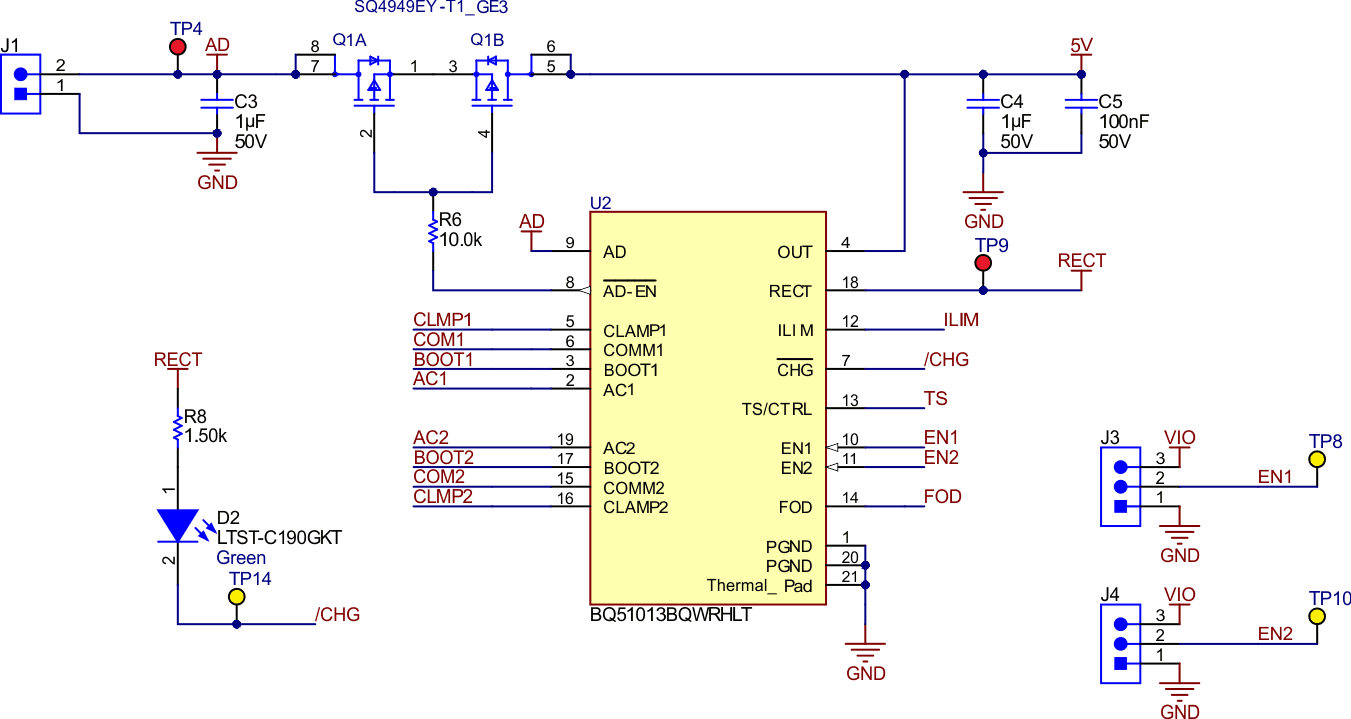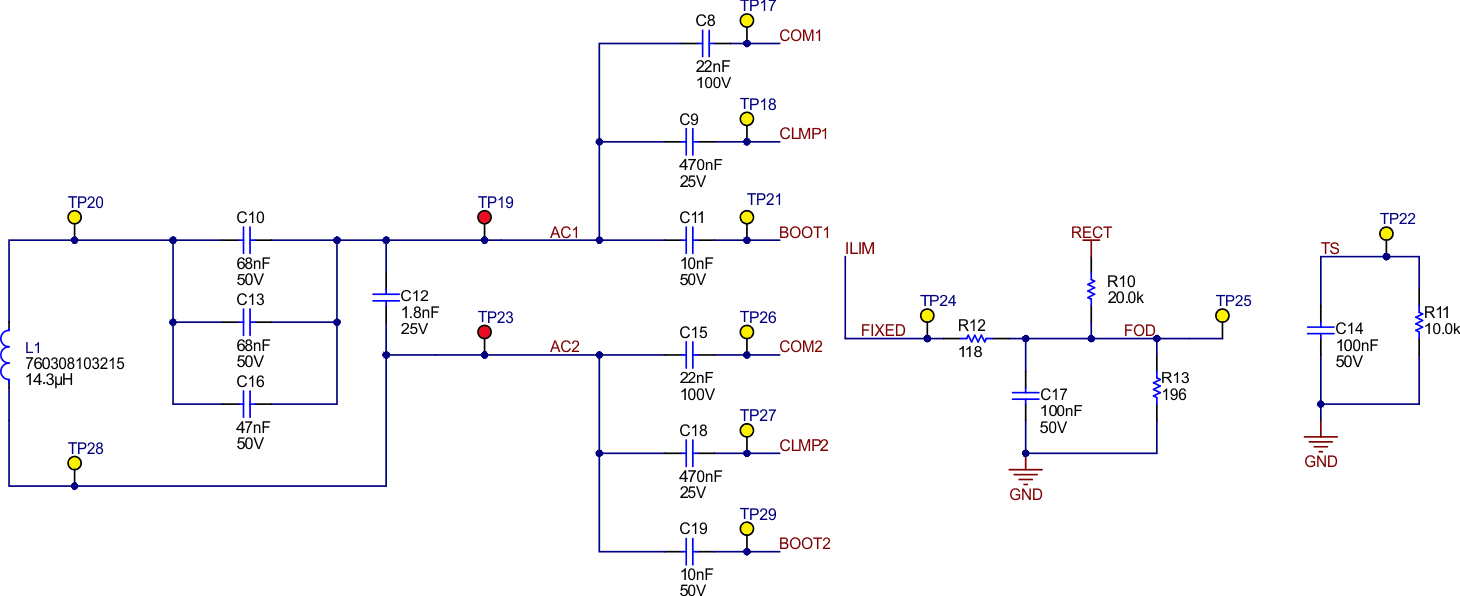SLUAAJ6 april 2023 BQ25171-Q1 , BQ51013B-Q1
1.1 Wireless Charging Input
The BQ51013B-Q1, when paired with a transmitter, allows for contactless power delivery using the Qi v1.2 protocol. The receiver has an overall peak AC to DC efficiency of 93% and a full synchronous rectifier. With dynamic rectifier control, dynamic efficiency limiting, foreign object detection (FOD), and an adaptive communication limit, the BQ51013B-Q1 makes the device designed for handheld devices that require an AEC-Q100 qualified wireless receiver.
To meet wireless power design requirements shown in Table 1-1, the BQ51013B-Q1 is configured with the following design requirements shown in Table 1-2.
| Description | Value |
|---|---|
| Input Current Limit | 1 A |
| Power Input | Wired or Wireless |
| TS/CTRL | Not Used |
To set the input current limit to 1 A, the device is calculated to have an RILIM of 118 Ohms with the recommended RFODof 196 Ohms. The design allows for enabling or disabling wireless or wired power based on the configuration for EN1 and EN2. These pins can be set to a low logic or a high logic.
Figure 1-1 shows the wireless receiver portion of the design using a Wurth Elektronik wireless charger coil (part number: 760308103215) and fixed current limit of 1 A. The output of this receiver is used as the input to the Li-Ion charger: BQ25171-Q1.
 Figure 1-1 Wireless Receiver Schematic: BQ51013B-Q1 - Power
and ENx pins
Figure 1-1 Wireless Receiver Schematic: BQ51013B-Q1 - Power
and ENx pins Figure 1-2 Wireless Receiver Schematic:
BQ51013B-Q1 - Passive components
Figure 1-2 Wireless Receiver Schematic:
BQ51013B-Q1 - Passive components